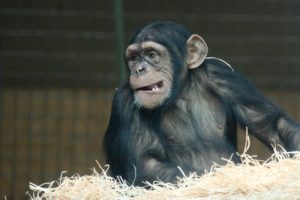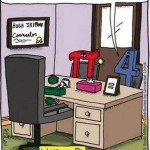September 18, 2014
Book Review: Letter from the Field–Part I
 Margaret Meade was born in 1901, a time when a woman’s place wasn’t doing field research in island jungles. That didn’t matter to her a wit when she went to Samoa at the age of twenty-three to study the life of the residents. Turned out, she had an excellent eye for decoding what she saw. Plus, she could write–not in the stodgy scientific way of most researchers, but with words people understood. She made them care about these far-away lives by relating their lives to emotions every person understands–love, hate, dreams, joy, child caring. Here are words you’ve heard, probably didn’t know they came from Margaret Mead:
Margaret Meade was born in 1901, a time when a woman’s place wasn’t doing field research in island jungles. That didn’t matter to her a wit when she went to Samoa at the age of twenty-three to study the life of the residents. Turned out, she had an excellent eye for decoding what she saw. Plus, she could write–not in the stodgy scientific way of most researchers, but with words people understood. She made them care about these far-away lives by relating their lives to emotions every person understands–love, hate, dreams, joy, child caring. Here are words you’ve heard, probably didn’t know they came from Margaret Mead:
It takes a village.
The primitive tribe who inspired these words likely no longer exists, but the power of the emotion rings true even today.
Her time in Samoa resulted in the first of forty immensely popular books on how human beings get along in groups–cultural anthropology. Her subjects were mostly preliterate, non-Western civilizations, and chock full of brilliance, empathy, common sense–traits ascribed usually to modern, civilized peoples, not those who wear loin clothes and live in huts.
I discovered Margaret Mead because I wanted to understand how mankind arrived at our current evolved state of culture (religious, art-lovers, decorating our bodies, problem-solvers able to ignore instinct in favor of cognitive decisions–traits that set us apart from every other living species). I’d emptied my local library of books by the obvious experts–Donald Johanson and the famous Lucy
the Leakeys and their ground-breaking work in Africa’s Cradle of Mankind
GHR Von Koenigswald and his Meeting Prehistoric Man

Credit: Ralph von Koenigswald. Source: http://collectie.tropenmuseum.nl/default.aspx?idx=ALL&field=*&search=10018632
–dozens more. I learned a lot about my ancestors, but what I could read was limited by the physical evidence. Anything that couldn’t be pinned to artifacts couldn’t be concluded.
I needed more if I was to understand enough to write my book on the life of our first ancestors. I needed the stuff that didn’t fossilize.
Early man was ruled by nature–how does anyone survive predators with fangs and claws and really thick skin? What does a natural habitat look like without even a grass hut or fire for protection? I turned to nature writers like Peter Matthiessen.
I nibbled around the edges of our arrival as the genus, Homo, two million years ago, and studied close species. Dian Fossy‘s gorillas

Courtesy of Mahlatini Luxury Safari https://www.mahlatini.com/gorilla-trekking-safaris/
and Birut Galdikas‘ orangutans
(who devoted their lives to understanding the humanity within our closest primate cousins), Jane Goodall and her chimpanzees (read every book she ever wrote)

Credit: Pixabay
Desmond Morris‘ unique look at mankind.
Understanding Great Apes and orangutans and chimpanzees proved valuable, but insufficient, so I turned to primitive tribes–evolved by early man standards, but antiquated by modern world standards. Why do Pygmies not have a leader? I explored current primitive tribes through the eyes of Colin Turnbull (The Forest People),
John Beattie’s Bunyoro: An African Kingdom,
and Tepilit Ole Saitoti’s Maasai Warrior.
I read E. Adamson Hoebel who wrote a one-of-a-kind book called The Law of Primitive Man. When did ‘consensus’ and ‘following rules’ become more important than ‘doing what’s right’? For that, I read field research curated into a wonderful book called “Social Life of Early Man”.
Arguably, it’s our big brain that’s responsible for our current position atop the food chain so I devoured experts like Christopher Wills and his eminently readable Runaway Brain.
What parts of our brain do what–and when did they get big enough to do that? Neanderthal brains were larger than ours, but in the wrong places. Symbolism and the ability to count seemed to be keys (lots of primitive tribes don’t count–many have no need to go past five when a well-worded description can distance and group size). Writers like Lev Vygotsky (his amazing research into how we count) enraptured me.
What made us go beyond the horizon to parts unknown, even when we had a nice home that kept us safe and dry? Primates don’t do that. Alligators stay in their swamps. No other species searches out inclement conditions and decides to test their survival skills. Why do we?
Margaret Mead seems to struggle with the same questions, though where my timeframe is 2 million years BCE, her’s is the 1900’s. And rather than from the comfort of her Google browser and local library, she goes to the primary sources. Letters from the Field 1925-1975 (Harper Collins 1977) starts in Samoa but includes the Admiralty Islands, American Indians, New Guinea, Bali and Iatmul. She evaluated their lives by living with them, understanding their languages, thriving in their cultural worlds.
Next week, I’ll discuss this book more, share some of my favorite parts.
More on research:
Book Review: A Virtual Tour of Africa
How to Virtually Visit a Location You Can’t Drop In On
Photo credit: By Smithsonian Institution from United States (Margaret Mead (1901-1978) Uploaded by Fæ) [see page for license], via Wikimedia Commons
Jacqui Murray is the author of the popular Building a Midshipman, the story of her daughter’s journey from high school to United States Naval Academy. She is webmaster for six blogs, an Amazon Vine Voice book reviewer, a columnist for Examiner.com and TeachHUB, Editorial Review Board member for Journal for Computing Teachers, monthly contributor to Today’s Author and a freelance journalist on tech ed topics. In her free time, she is editor of technology training books for how to integrate technology in education.
















